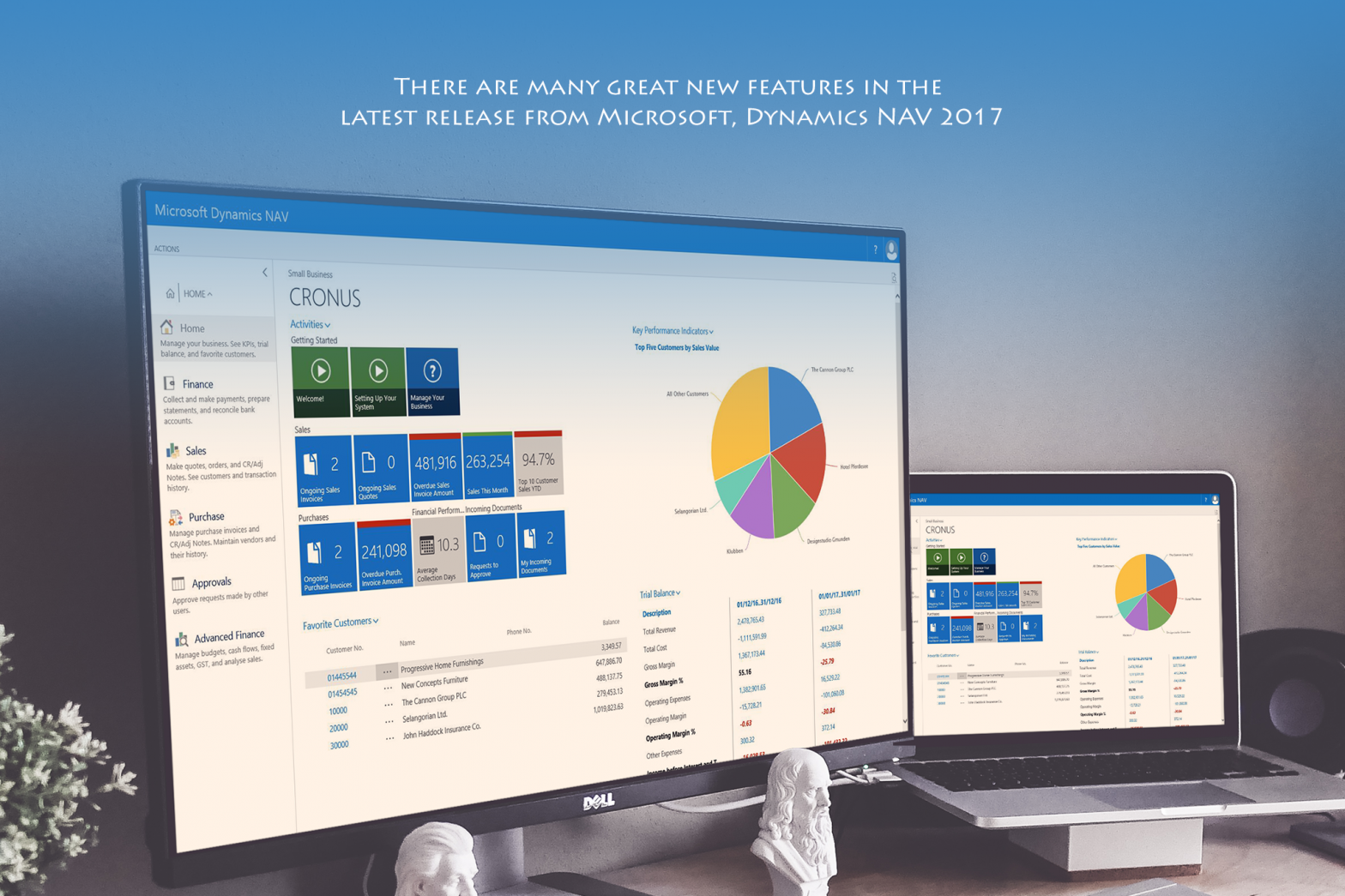As we went through some of the interesting new features of Dynamics NAV 2017 in my previous article WHAT’S NEW IN MICROSOFT DYNAMICS NAV – PART I I would like to continue describing some other important features of this new version of Dynamics NAV.

NEW DATATYPE : MEDIA & MEDIASET

Media :
A complex type that encapsulates media files, such as image .jpg and .png files, in application database tables. The Media data type can be used as a table field data type, but cannot be used as a variable or parameter. The Media data type enables you to import a media file to the application database and reference the file from records, making it possible to display the media file in the client user interface. You can also export media from the database to files and streams.
MediaSet :
A complex type that encapsulates media, such as images, in application database tables. The MediaSet data type can be used as a table field data type, but cannot be used as variable or parameter. The MediaSet data type enables you to import media to the application database as part of a collection, and then reference the imported media from records. This makes it possible to display the media in the client user interface. You can also export media from the database to files and streams.
Outlook Ad In:
From Outlook App, the integration between NAV and Office 365 allows you to see dashboards for contacts, customers and vendors, which contain charts and cubes. The improved compatibility enables you to easily create customers, vendors, quotes, and invoices, all without leaving Outlook. There is also improved Word integration, to help you lay out your documents professionally. The seamless experience means that you can save time, increase accuracy, and offer your customers an improved experience by navigating effortlessly between NAV and Office 365.
CHANGES IN ITEM CATEGORIES :
In Dynamics NAV 2016, we have an option for Product Groups as shown below :

SET UP CUSTOMER/VENDOR/ITEM MASTER TEMPLATES :
With Dynamics NAV 2017, you can now setup templates for Customer, Vendor or Items as shown below.

EXTENSION :
You can extend and customize a Dynamics NAV deployment without modifying the original application objects. With extension packages, you install, upgrade, and uninstall functionality in on-premises deployments or for select tenants in a multitenant deployment. Customers can easily add or remove horizontal or customized functionality to their solution that upgrades much easier than past solutions. Your extension can add new objects and extend objects that you know to be present in the application, such as objects in the application that Microsoft makes available. The main difference from classical development is that source code modifications are not allowed. Instead, you use C/AL events to extend and customize objects. Extensions are delivered as .navx package files. A .navx package contains various artifacts that deliver the new functionality to the Dynamics NAV deployment as well as a manifest that specifies the name, publisher, version, and other attributes of the extension. You can manage .navx packages with a series of Windows PowerShell cmdlets that are available in the Microsoft Dynamics NAV 2017 Administration Shell. There are also cmdlets available to ISVs and developers in the Microsoft Dynamics NAV 2017 Development Shell that help create packages.
HIERARCHY OF ITEMS IN NAV 2017 :
NAV 2017 gives you the ability to create a hierarchy within the Item Category group, giving you far more flexibility to create item reports than in previous versions of NAV.
CANCEL POSTED CREDIT MEMOS :
Posted sales and purchase credit memos are now accessible in the same way as posted sales and purchase invoices. Dynamics NAV 2017 will un-apply credit memos from invoices, creating a new invoice to apply to the credit memo.
NOTIFICATIONS IN THE USER INTERFACE :
With Dynamics NAV 2017, Microsoft introduces a new way to send non-intrusive notifications to the UI (user interface) in the Web client. These notifications inform the user with relevant information in a given situation, but does not require immediate action by the user or blocks the user from continuing with the current job.
I hope you enjoyed reading both parts of this article. I would be happy to answer any Dynamics NAV related questions you have or feel free to get in touch with us at business@techcronus.com for your Dynamics related inquiries.
















 Get Started
Get Started

